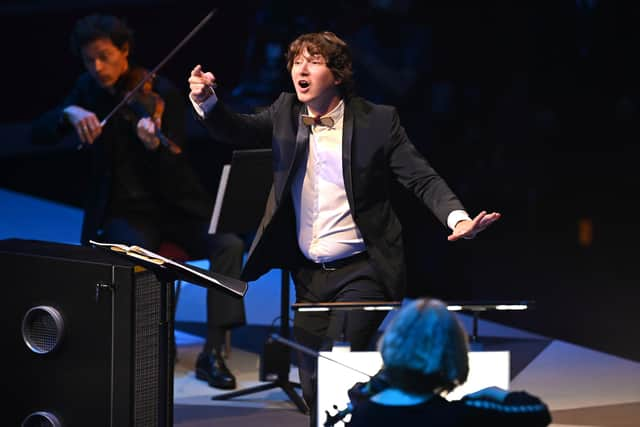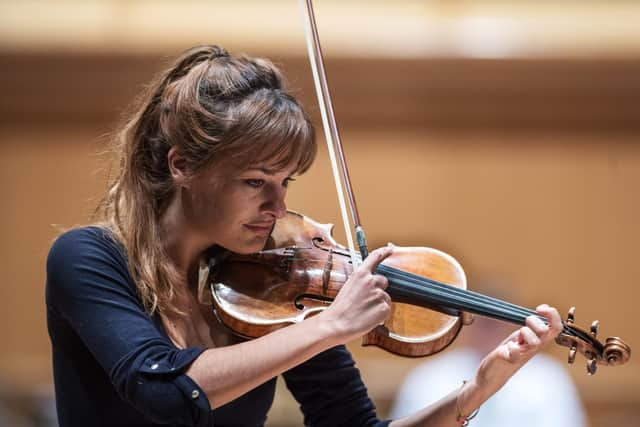Arts review of 2022: Ken Walton on the year in classical music
Despite the obvious post-pandemic, geopolitical and economic challenges, 2022 was a particularly heartening year for classical music in Scotland, where both creative and fiscal fortitude saw the bulk of regular activity return to as normal a pattern of activity as possible. And as the year drew to a close, a noticeable upsurge in audience numbers was a hopeful sign that public confidence is slowly but surely returning.
And so it should, because there’s too much to lose if we don’t get out and support our musicians. If there’s anything to be learnt from the Covid years it’s how vital and uplifting the live concert experience is, compared to watching streamed performances in front of a home computer.
Advertisement
Hide AdAdvertisement
Hide AdA striking example has been the increasingly high-energy, showbiz impact of Maxim Emelyanychev as chief conductor of the Scottish Chamber Orchestra. In one all-Mozart programme in March his punchy, unpredictable style steered close to anarchic, which had the audience hailing him with rock-style hysteria. Mozart survived, and how.


Thomas Søndergärd’s charismatic musical directorship continues with the RSNO. They not only took an early lead in resuming international touring – Germany and Poland in March – but at home delivered such memorable highlights as a blockbuster Mahler 3 at the Edinburgh Festival, and powerfully resonant Stravinsky’s The Rite of Spring to open the current season.
July’s announcement that Søndergärd is to become music director of the Minnesota Orchestra from next year does, however, beg the question whether he intends to stay on beyond 2024 when his contract ends. He’s said he’ll do both jobs initially. Time will tell.
2022 saw an important conductor transition for the BBC SSO, in need of a change from its beleaguered relationship with outgoing chief conductor Thomas Dausgaard. Off he went in August and in came Ryan Wigglesworth, a versatile figure who conducts, performs, even composes. He combined all three in some of his bold early programmes, is a more stabilising personality, yet still in the throes of establishing his presence
The other notable exit from the Scottish arts scene was Fergus Linehan, whose final Edinburgh International Festival as director also marked the event’s 75th anniversary. While audience support was erratic for the classical music programme, it produced some blistering triumphs.


Chief among them were Swedish soprano Malin Byström’s sensual Salome in the Bergen Philharmonic’s concert performance of Strauss’ lurid biblical opera; and a Rite of Spring from François-Xavier Roth’s extraordinary Les Siècles orchestra, ripened by the visceral intensity of its original fin-de-siècle instruments. Both serve as worthy testaments to Linehan’s safe EIF custodianship. All eyes are now on his surprise successor, Nicola Benedetti.
Normal service resumed for the major festivals. Among the many gems, East Neuk drew on the instant chemistry between pianist Boris Giltburg and the Pavel Haas Quartet. Lammermuir took a Massenet rarity out of mothballs – the compelling French Revolution opera Thérèse, performed by Scottish Opera (also later in Perth) – and launched Christopher Bell’s cracking new NYCoS Chamber Choir. Cumnock Tryst, meanwhile, promoted the trademark perfection of the Kings Singers, now in their 50th season.
Advertisement
Hide AdAdvertisement
Hide AdLast but not least, Scottish Opera hit successive creative jackpots, from the magic and originality of Dominic Hill’s production of Britten’s A Midsummer Night’s Dream in February, to such recent five-star hits as Bernstein’s madcap Candide, brilliantly conceived for semi-outdoor performance in Glasgow and cheekily conflicting with the Edinburgh International Festival; and an extraordinary Ainadamar, Osvaldo Golijov’s flamenco-inspired theatrical spectacular that defies categorisation but thrilled opera audiences in Glasgow and Edinburgh.
Consider that success alongside the miserable plight of English National Opera, currently facing the axe unless it reduces and relocates to Manchester. Scotland already has a slimline national opera company that, a decade ago, famously slashed its operation – by political diktat – to a mere shadow of its former self. Supporters and critics raged against it then, fearful that what was done would never be undone. It went ahead anyway, we got used to it, and to its credit, the company now delivers regular quality where quantity has been denied.


In that respect, it does no damage to acknowledge the accidental foresight of Scottish Opera in finding itself ahead of the game, spreading its assets wisely and probably feeling a tad more secure as a result, unlike poor ENO. Fortunes are fickle in the arts world.